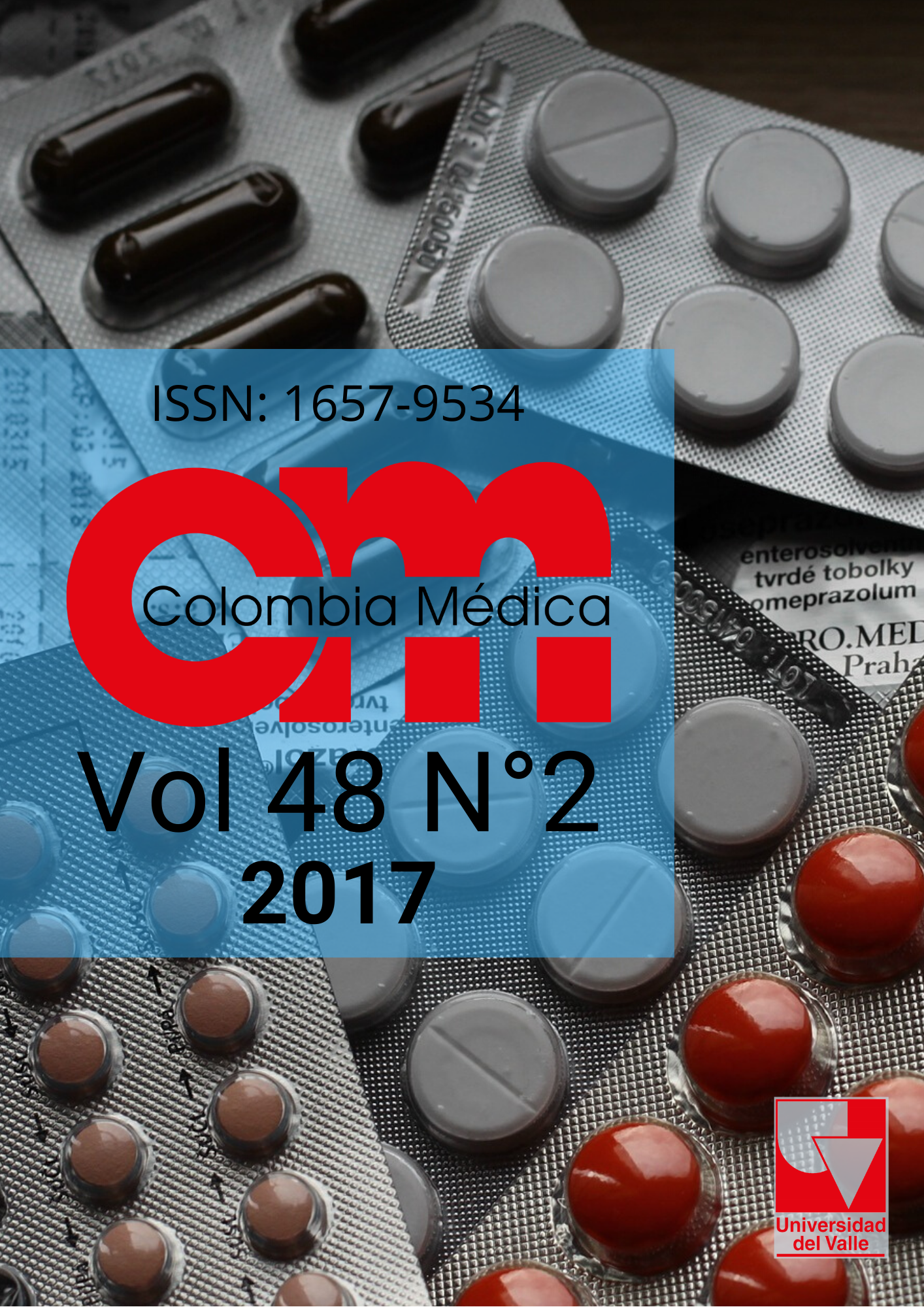Bevacizumab as a treatment for hereditary hemorrhagic telangiectasia in children: a case report
Keywords:
Telangiectasia Hereditary Hemorrhagic, Bevacizumab, Osler-Rendu-Weber Disease, PediatricsMain Article Content
Shovlin CL. Hereditary haemorrhagic telangiectasia pathophysiology, diagnosis and treatment. Blood Rev. 2010; 24: 203–19. DOI: https://doi.org/10.1016/j.blre.2010.07.001
Dupuis-Girod S, Bailly S, Plauchu H. Hereditary hemorrhagic telangiectasia from molecular biology to patient care. J Thromb Haemost. 2010; 8: 1447–56. DOI: https://doi.org/10.1111/j.1538-7836.2010.03860.x
Govani FS, Shovlin CL. Hereditary haemorrhagic telangiectasia a clinical and scientific review. Eur J Hum Genet. 2009; 17: 860–71. DOI: https://doi.org/10.1038/ejhg.2009.35
Kjeldsen AD, Kjeldsen J. Gastrointestinal bleeding in patients with hereditary hemorrhagic telangiectasia. Am J Gastroenterol. 2000; 95: 415–8. DOI: https://doi.org/10.1111/j.1572-0241.2000.01792.x
Cottin V, Plauchu H, Bayle J-Y, Barthelet M, Revel D, Cordier J-F. Pulmonary Arteriovenous Malformations in Patients with Hereditary Hemorrhagic Telangiectasia. Am J Respir Crit Care Med. 2004; 169: 994–1000. DOI: https://doi.org/10.1164/rccm.200310-1441OC
Buonamico P, Suppressa P, Lenato GM, Pasculli G. D’Ovidio F.Memeo M Liver involvement in a large cohort of patients with hereditary hemorrhagic telangiectasia Echo-color-Doppler vs multislice computed tomography study. J Hepatol. 2008; 48: 811–20. DOI: https://doi.org/10.1016/j.jhep.2007.12.022
Krings T, Ozanne A, Chng SM, Alvarez H, Rodesch G, Lasjaunias PL. Neurovascular phenotypes in hereditary haemorrhagic telangiectasia patients according to age. Neuroradiology. 2005; 47: 711–20. DOI: https://doi.org/10.1007/s00234-005-1390-8
Giordano P, Lenato GM, Suppressa P, Lastella P, Dicuonzo F, Chiumarulo L. Hereditary hemorrhagic telangiectasia arteriovenous malformations in children. J Pediatr. 2013; 163: 173–9. DOI: https://doi.org/10.1016/j.jpeds.2013.02.009
Al-Saleh S, Mei-Zahav M, Faughnan ME, MacLusky IB, Carpenter S, Letarte M. Screening for pulmonary and cerebral arteriovenous malformations in children with hereditary haemorrhagic telangiectasia. Eur Respir J. 2009; 34: 875–81. DOI: https://doi.org/10.1183/09031936.00030009
Garcia-Tsao G, Korzenik JR, Young L, Henderson KJ, Jain D, Byrd B. Liver Disease in Patients with Hereditary Hemorrhagic Telangiectasia. N Engl J Med. 2000; 343: 931–6. DOI: https://doi.org/10.1056/NEJM200009283431305
Faughnan ME, Palda VA, Garcia-Tsao G, Geisthoff UW, McDonald J, Proctor DD. International guidelines for the diagnosis and management of hereditary haemorrhagic telangiectasia. J Med Genet. 2011; 48: 73–87. DOI: https://doi.org/10.1136/jmg.2009.069013
Shovlin CL, Jackson JE, Bamford KB, Jenkins IH, Benjamin AR, Ramadan H. Primary determinants of ischaemic stroke/brain abscess risks are independent of severity of pulmonary arteriovenous malformations in hereditary haemorrhagic telangiectasia. Thorax. 2008; 63: 259–66. DOI: https://doi.org/10.1136/thx.2007.087452
Yaniv E, Preis M, Shevro J, Nageris B, Hadar T. Anti-estrogen therapy for hereditary hemorrhagic telangiectasia - a long-term clinical trial. Rhinology. 2011; 49: 214–6. DOI: https://doi.org/10.4193/Rhino09.201
Klepfish A, Berrebi A, Schattner A. Intranasal tranexamic acid treatment for severe epistaxis in hereditary hemorrhagic telangiectasia. Arch Intern Med. 2001; 161: 767–9. DOI: https://doi.org/10.1001/archinte.161.5.767
Carmeliet P. Angiogenesis in life, disease and medicine. Nature. 2005; 438: 932–6. DOI: https://doi.org/10.1038/nature04478
Dupuis-Girod S, Ginon I, Saurin J-C, Marion D, Guillot E, Decullier E. Bevacizumab in patients with hereditary hemorrhagic telangiectasia and severe hepatic vascular malformations and high cardiac output. JAMA. 2012; 307: 948–55. DOI: https://doi.org/10.1001/jama.2012.250
Mitchell A, Adams LA, MacQuillan G, Tibballs J, vanden Driesen R, Delriviere L. Bevacizumab reverses need for liver transplantation in hereditary hemorrhagic telangiectasia. Liver Transplant. 2008; 14: 210–3. DOI: https://doi.org/10.1002/lt.21417
Shovlin CL, Guttmacher AE, Buscarini E, Faughnan ME, Hyland RH, Westermann CJ. Diagnostic criteria for hereditary hemorrhagic telangiectasia (Rendu-Osler-Weber syndrome) Am J Med Genet. 2000; 91: 66–70. DOI: https://doi.org/10.1002/(SICI)1096-8628(20000306)91:1<66::AID-AJMG12>3.0.CO;2-P
FDA. Highlights of prescribing information. Avastin (bevacizumab) Solution for intravenous infusion. Genentech; 2004. http://www.accessdata.fda.gov/drugsatfda_docs/label/2014/125085s301lbl.pdf.
Kanellopoulou T, Alexopoulou A. Bevacizumab in the treatment of hereditary hemorrhagic telangiectasia. Expert Opin Biol Ther. 2013; 13: 1315–23. DOI: https://doi.org/10.1517/14712598.2013.813478
Suppressa P, Liso A, Sabbà C. Low dose intravenous bevacizumab for the treatment of anaemia in hereditary haemorrhagic telangiectasia. Br J Haematol. 2011; 152: 365. DOI: https://doi.org/10.1111/j.1365-2141.2010.08481.x
Fleagle JM, Bobba RK, Kardinal CG, Freter CE. Iron deficiency anemia related to hereditary hemorrhagic telangiectasia response to treatment with bevacizumab. Am J Med Sci. 2012; 343: 249–51. DOI: https://doi.org/10.1097/MAJ.0b013e3182429866
Young LH, Henderson KJ, White RI, Garcia-Tsao G. Bevacizumab finding its niche in the treatment of heart failure secondary to liver vascular malformations in hereditary hemorrhagic telangiectasia. Hepatology. 2013; 58: 442–5. DOI: https://doi.org/10.1002/hep.26472
Faughnan ME, Thabet A, Mei-Zahav M, Colombo M, Maclusky I, Hyland RH. Pulmonary arteriovenous malformations in children outcomes of transcatheter embolotherapy. J Pediatr. 2004; 145: 826–31. DOI: https://doi.org/10.1016/j.jpeds.2004.08.046
Faughnan ME, Lui YW, Wirth JA, Pugash RA, Redelmeier DA, Hyland RH. Diffuse pulmonary arteriovenous malformations characteristics and prognosis. Chest. 2000; 117: 31–8. DOI: https://doi.org/10.1378/chest.117.1.31
Pierucci P, Murphy J, Henderson KJ, Chyun DA, White RIJ. New definition and natural history of patients with diffuse pulmonary arteriovenous malformations twenty-seven-year experience. Chest. 2008; 133: 653–61. DOI: https://doi.org/10.1378/chest.07-1949
Millan NC, Poveda MJ, Cruz O, Mora J. Safety of bevacizumab in patients younger than 4 years of age. Clin Transl Oncol. 2016; 18(5): 464–8. DOI: https://doi.org/10.1007/s12094-015-1389-5
de Pasquale MD, Castellano A, de Sio L, de Laurentis C, Mastronuzzi A, Serra A. Bevacizumab in pediatric patients how safe is it? Anticancer Res. 2011; 31(11): 3953–7.
Glade Bender JL, Adamson PC, Reid JM, Xu L, Baruchel S, Shaked Y. Phase I trial and pharmacokinetic study of bevacizumab in pediatric patients with refractory solid tumors a Children’s Oncology Group Study. J Clin Oncol. 2008; 26(3): 399–405. DOI: https://doi.org/10.1200/JCO.2007.11.9230
Benesch M, Windelberg M, Sauseng W, Witt V, Fleischhack G, Lackner H. Compassionate use of bevacizumab (Avastin) in children and young adults with refractory or recurrent solid tumors. Ann Oncol Off J Eur Soc Med Oncol. 2008; 19(4): 807–13. DOI: https://doi.org/10.1093/annonc/mdm510
Downloads

This work is licensed under a Creative Commons Attribution-NonCommercial 4.0 International License.
The copy rights of the articles published in Colombia Médica belong to the Universidad del Valle. The contents of the articles that appear in the Journal are exclusively the responsibility of the authors and do not necessarily reflect the opinions of the Editorial Committee of the Journal. It is allowed to reproduce the material published in Colombia Médica without prior authorization for non-commercial use

